Kanzashi are traditional Japanese hair ornaments used to adorn women’s hair.
Brief history of Kanzashi (簪)
During the Edo period, which spanned the mid to late 18th century, is considered the golden age of Kanzashi. At this time, Japanese hairstyling underwent a remarkable development, and a wide variety of kanzashi were created to complement and enhance women’s elaborate hairstyles.
During the same period as mentioned above, kanzashi hair ornaments became extremely popular and spread to different strata of Japanese society.
These ornaments were used both at the imperial court and among the lower classes. From oiran (maiko) and geiko, to the daughters of samurai and merchant families, and even village women, everyone had access to different types of kanzashi to decorate their hair.
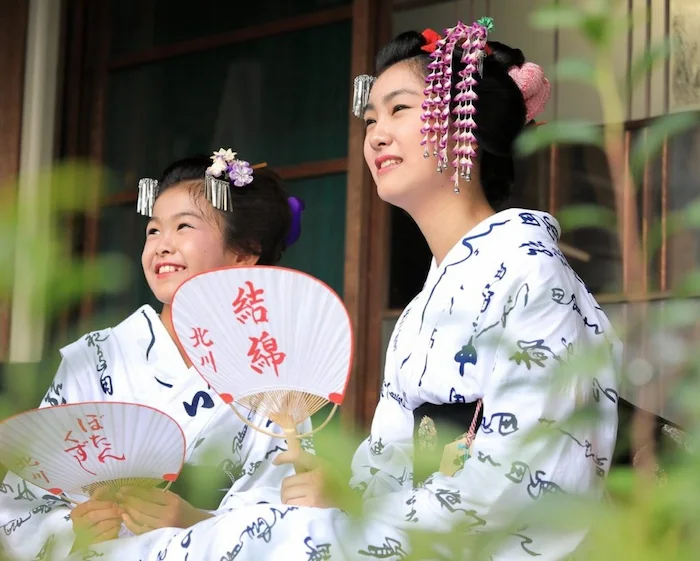
Categories of Japanese Kanzashi (簪)
In Japan, hair ornaments were divided into 3 main categories:
- Kanzashi (簪)
- Combs
- Kogai
Kanzashi was used to highlight the beauty and social status of women. It was a symbol of popularity, dignity, pride and connection with her lover.
Edo-era women expressed their personal style by inserting baskets and combs into their hairstyles.
For example, oiran women used to insert kanzashi made of precious metals and shells, as well as wearing real flowers in their hair (kanzashi flowers).
In the West, these ornaments would resemble hairpins, brooches, tiaras, among many other ornaments.
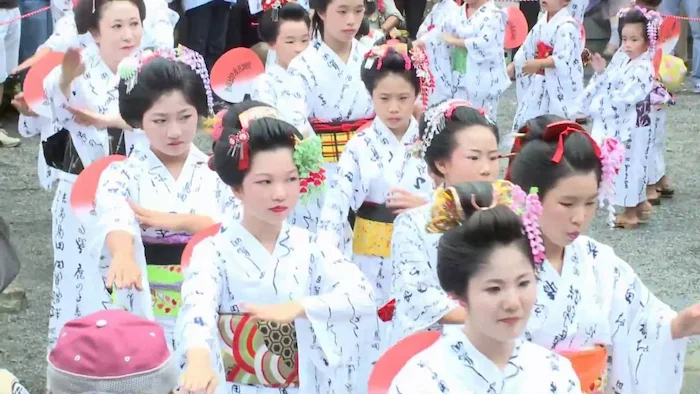
Kanzashi (簪) or kanzashi hair pin materials
The materials used to make kanzashi hair ornaments were very diverse.
- Gold, silver, tortoiseshell, ivory, wood, cloth, paper, bone, glass, celluloid, among others, were used.
Depending on social status, the materials used in hair ornaments could vary.
Gold, silver and tortoiseshell were the most common and valuable materials, while brass was used as an imitation of gold, and tin and aluminum imitated silver.
In some cases, fakes were created that attempted to emulate tortoiseshell and ivory. Today, however, most hair ornaments are made of plated brass or plastic. Although brass is not a low-quality material, authentic and durable materials were highly valued because of their beauty and longevity.
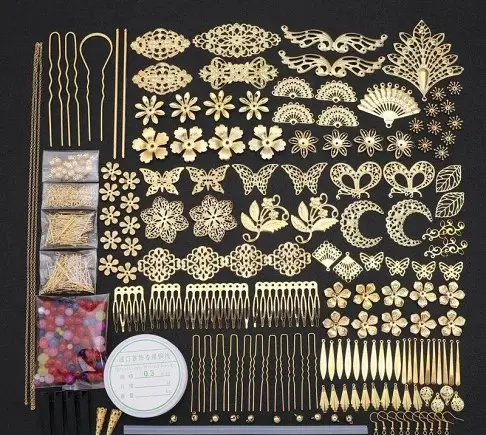
Types of Kanzashi for hair (簪)
Kanzashi (簪) are divided into several types according to their design and use.
Some examples of these are chirikan, birakan, birabirakan, yoshicho, ryotenkanzashi, among others.
Each type of kanzashi has specific characteristics and was used for different occasions.
For example, the chirikan was used in traditional Japanese hairstyles, while the birakan and birabirakan were used for modern hairstyles with a decorative fall.
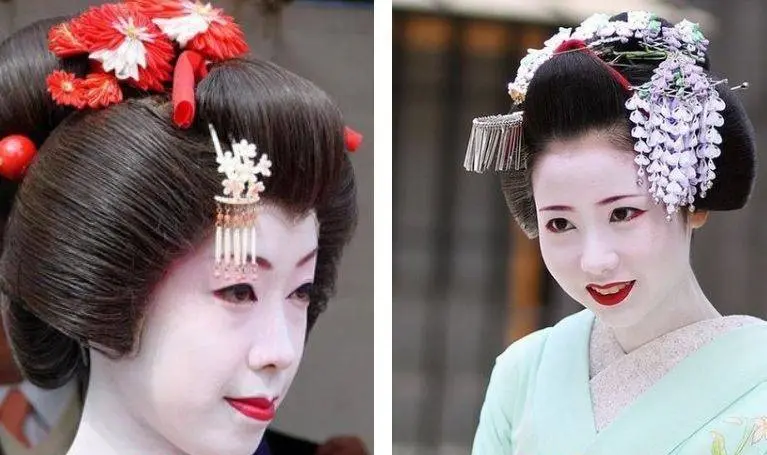
Let’s take a closer look at each of them:
Chirikan, the elegant and sophisticated Japanese kanzashi
The Chirikan is a type of Kanzashi used in traditional Japanese hairstyles. It is characterized by its round shape and elaborate structure.
The Chirikan usually features a central ornament, such as a flower or a jewel, surrounded by delicate details in the form of leaves, branches or other decorative elements.
This type of kanzashi is elegant and sophisticated, and is usually inserted into the hair near the forehead or at the top of the hairstyle.
In historical dramas, young women from samurai and merchant families often wear Chirikan inserted in the right front of their hair.
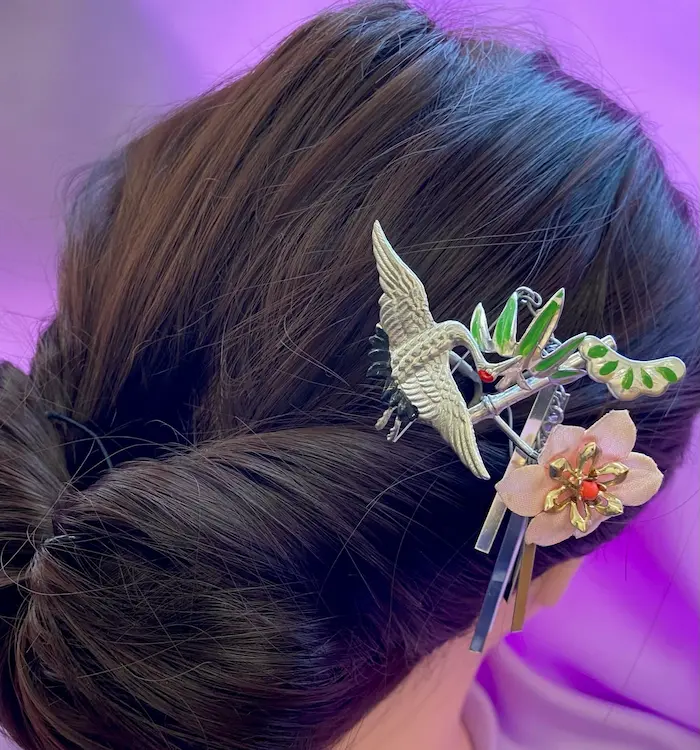
Birakan, the kanzashi of glamour
The Birakan is another type of Japanese Kanzashi used in current and ancient hairstyles.
It is characterized by a beautifully decorative cascading or falling structure.
The Birakan consists of multiple ornaments hanging from a common base, creating an effect of movement and elegance. These ornaments may include small flowers, leaves, beads or more elaborate ornamental elements such as butterflies or birds.
The Birakan is placed in the hair, usually on one side of the head, and adds a touch of beauty and glamour to the hairstyle.
It is a type of kanzashi especially prized for its striking visual presence, worn by women of potential.
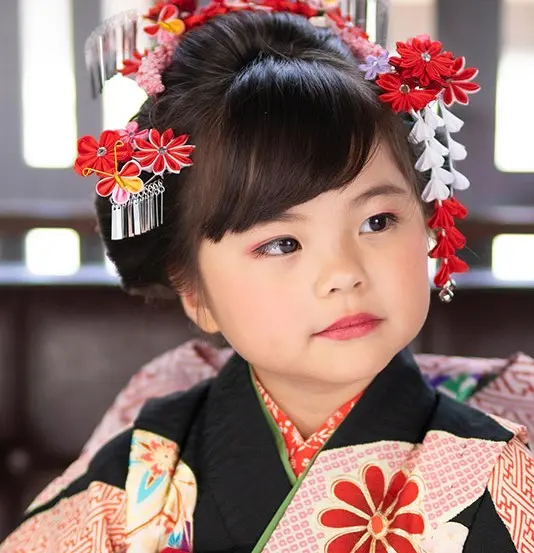
Birabirakan, the extravagant Japanese kanzashi
The Birabirakan is similar to the Birakan in terms of design, but is distinguished by having even more ornaments hanging in a cascading fashion.
Its name “Birabira” means “trembling” in Japanese, which describes the sense of movement that the hanging ornaments create.
Birabirakan is especially eye-catching and extravagant, and is used for special occasions or festive events. It is not common for married or engaged women to wear this type of Kanzashi, as it is traditionally considered more appropriate for single women.
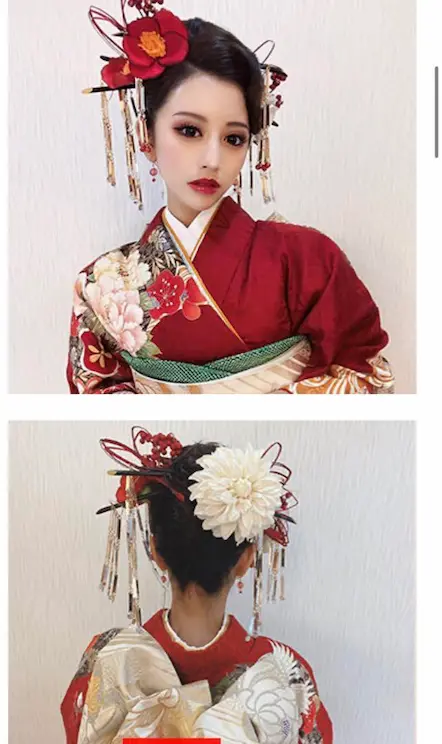
Yoshicho, the delicate kanzashi
Yoshicho is a type of Kanzashi that is distinguished by its flat, rectangular structure.
It is composed of several overlapping layers of cloth or paper, forming an elaborate and detailed design.
Yoshicho often feature floral, geometric or abstract motifs, which are created by carefully performed folding and cutting techniques.
This type of Kanzashi is known for its delicacy and requires advanced craftsmanship skills to create.
The Yoshicho is placed in the hair, usually on one side, and adds a touch of sophistication and elegance to the hairstyle.
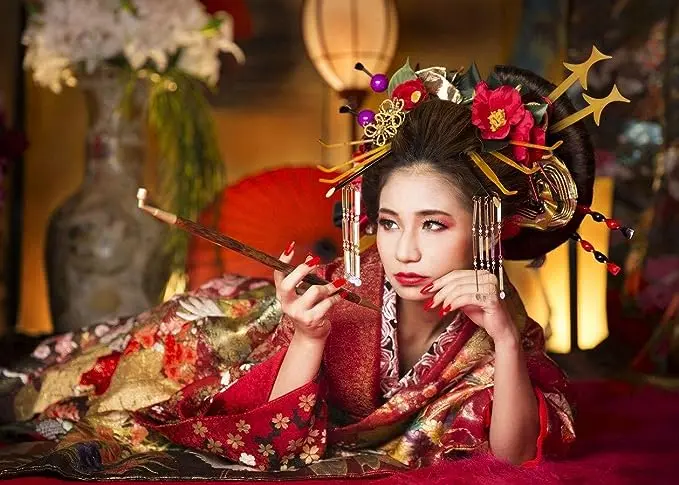
Ryotenkanzashi, special occasion kanzashi
Ryotenkanzashi is a type of Kanzashi that is characterized by having two main ornaments, one on each side of the hairstyle.
Its name “Ryoten” means “two points” in Japanese, which refers to the symmetrical placement of the ornaments.
These ornaments are usually flowers or larger, eye-catching ornamental elements.
Ryoten kanzashi is used for special occasions and ceremonies, and is often combined with other types of kanzashi to achieve a complete and harmonious hairstyle.
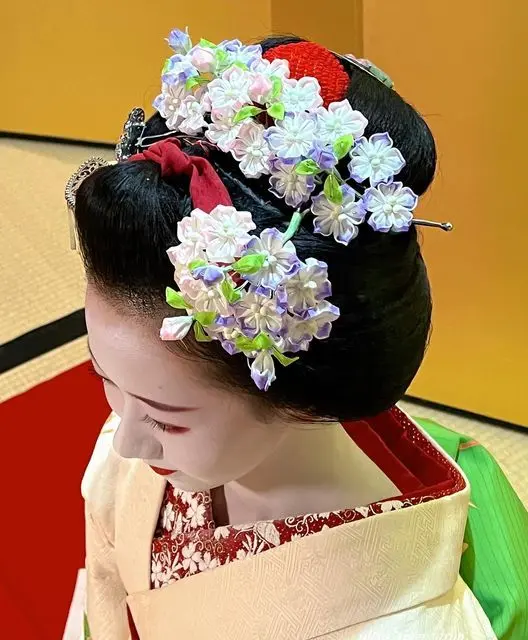
How to put a Japanese kanzashi
The latter were inserted in the right front of the hair of young women from samurai and merchant families in historical dramas.
Nowadays, the most common method of kanzashi insertion is the “back insertion”, where one is placed on the right side and a smaller one on the left side for aesthetic balance.
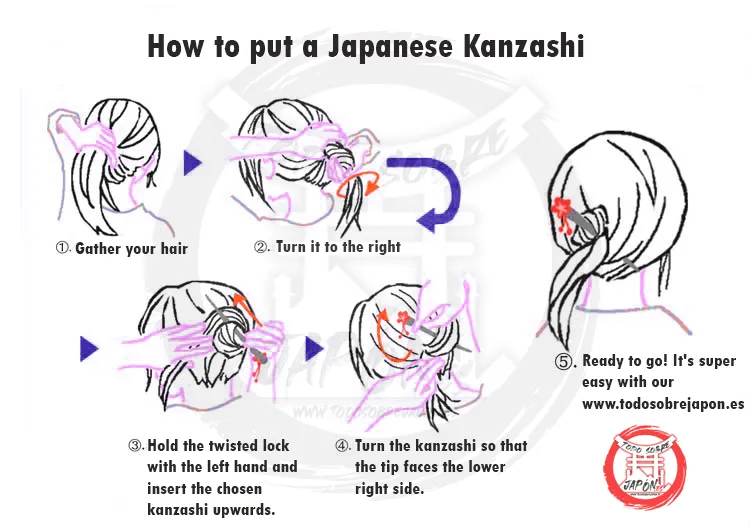
Kanzashi according to shape and style
In addition to the different types of Kanzashi, we can also classify them according to their shape and style.
Tama Kanzashi, simplicity and elegance in marumage and icho gaechi
Tama Kanzashi, which is a simple type with a spike and a round ornament. Although its design is simple, it has been widely used and appreciated over time.
During the Edo period, it was used for insertion into hairstyles such as marumage (oval bun) or icho gaechi (traditional Japanese hairstyle), and is still used for the same purpose today.
Edo Plata Kanzashi, valuable and beautiful
The Edo Silver Kanzashi is another type of Kanzashi that was popular in the Edo period. It was shorter, approximately 12 cm in length, and was made of silver.
Almost the entire ornament was made of pure silver, but there were also versions in which the lower half was silver and the visible part was decorated with gilded copper. These Kanzashi were highly prized and used from the Edo period to the Meiji period.
Hirauchi Kanzashi, the kanzashi of samurai families and geishas
Another type of Kanzashi is Hirauchi Kanzashi, which is characterized by having a flat, circular frame with patterns of flowers or family coats of arms engraved on it. These designs were made using holes or thin line engravings.
Hirauchi Kanzashi was usually made of silver or silver-plated metal, and was also known as “gin hira” (silver and flat). This type of kanzashi was especially popular among the women of samurai families and was also prized by geisha for dances such as the Kinryu no mai.
Bira Bira Kanzashi, the kanzashi of single women
The Bira Bira Kanzashi is a Kanzashi that was created specifically for single women.
Its distinctive feature is its unique design with multiple dangling chains and ornaments in the shape of butterflies or birds.
This Kanzashi is placed around a woman’s left temple and is especially eye-catching and glamorous.
However, married or engaged women should not wear it according to traditions.






